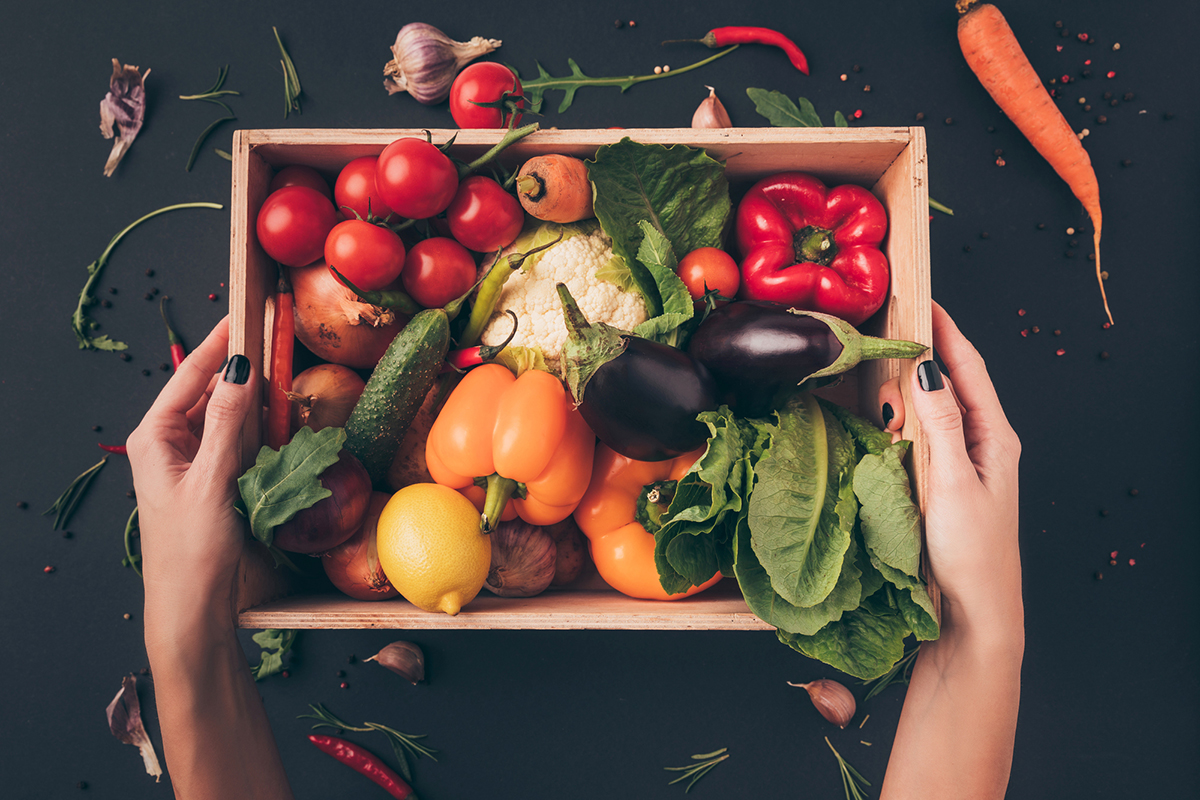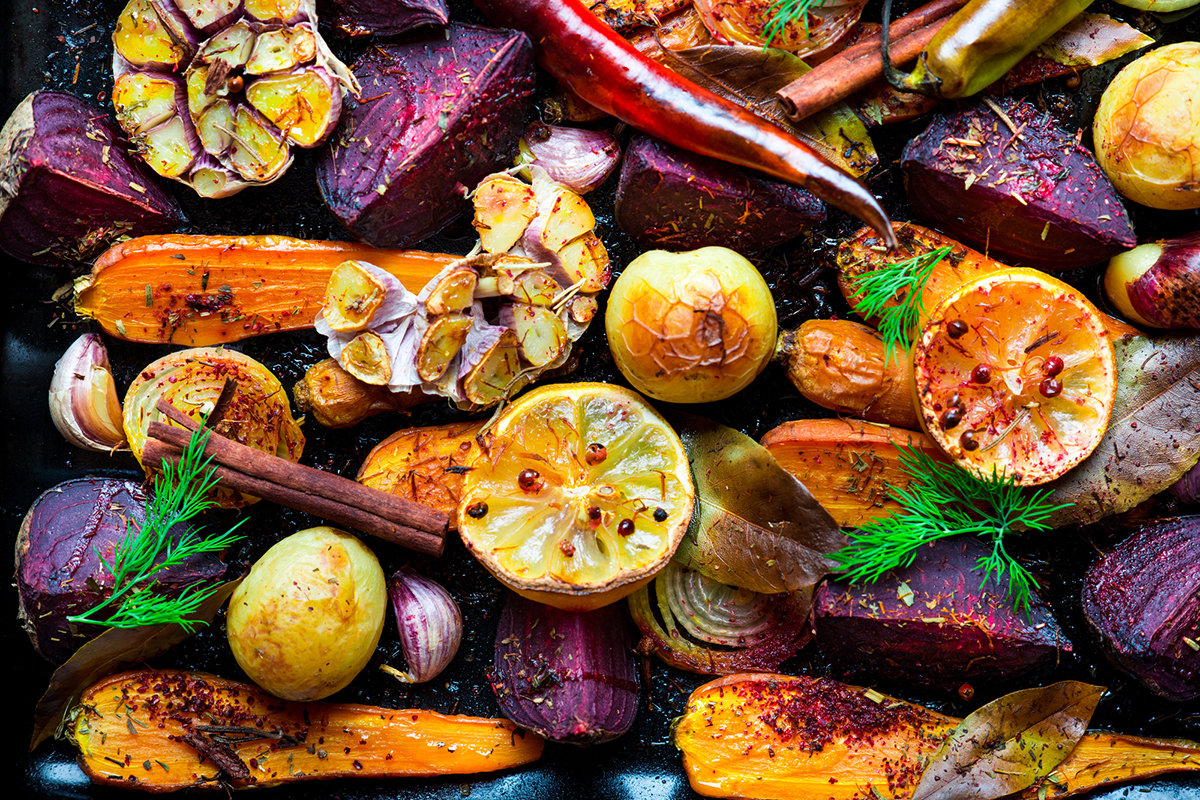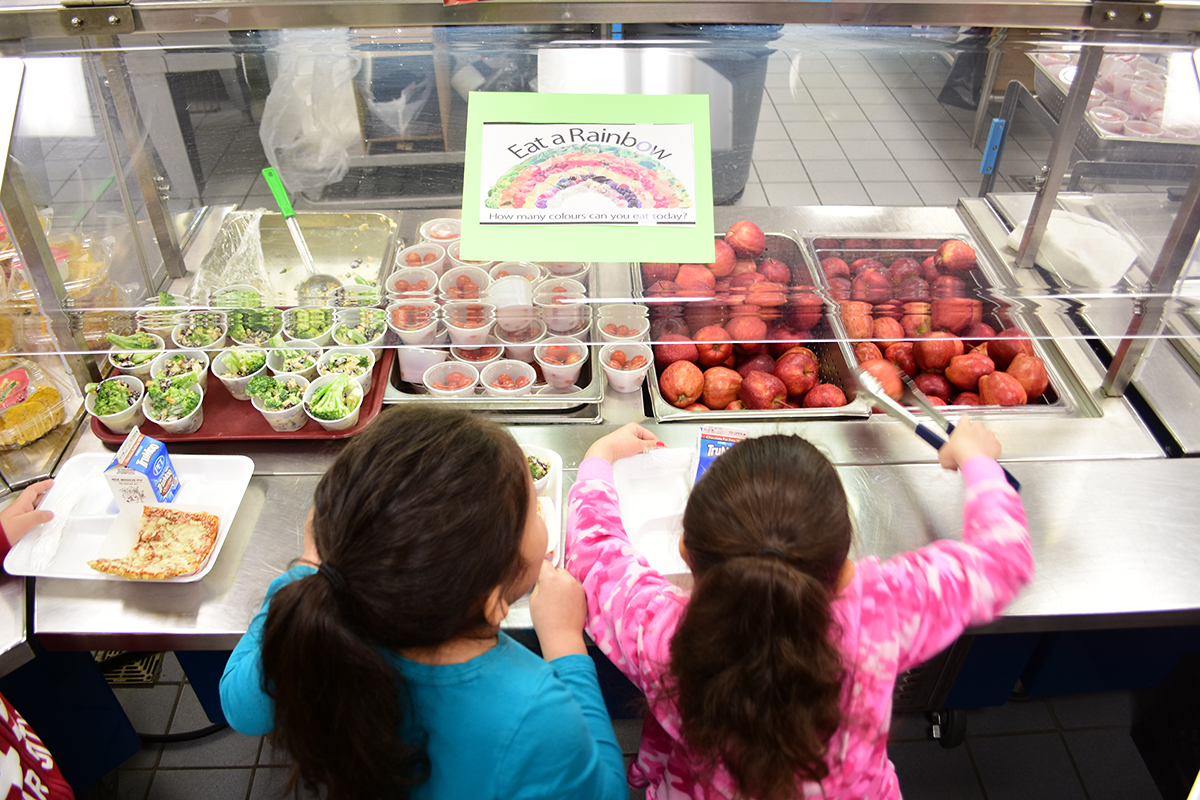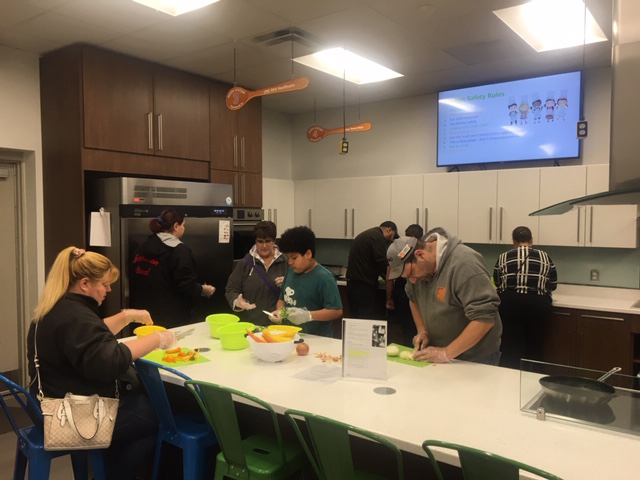
For the Love of Vegetables
Rachel Pohlman MPH, RD, LDN – Nutrition and Physical Activity Director
I think vegetables too often get a bad rap. They’re called too bitter, mushy, slimy, or compared to “rabbit food.” Many see eating vegetables as a burden or something to get through to get to the good stuff. How many have either heard or said, “eat your broccoli and then you can have your ice cream?” I think much of this reputation comes from people not knowing how to prepare vegetables. Many people open up a can of green beans, add fat, and cook it to mush. Not the most enticing choice. However, in honor of National Nutrition Month, I am here to say eating healthy is something to celebrate, and vegetables are simply delicious. In fact, I would say vegetables are the good stuff.
As I learn to prepare vegetables and add more fresh produce to my diet, I find that vegetables add interest to a meal. I love exploring the wide variety of vegetables that exist and learning how to prepare them. When I make taco night a vegetable-based meal, everyone is blown away with how inviting and delicious it is. Vegetables provide a great variety of color, texture, and aroma. They can add excitement and pizzazz to an otherwise dull meal.
Mom really did know best: vegetables are fantastic for our health. A vegetable-rich diet is associated with reduced risk of several chronic diseases, including heart disease. Vegetables provide vitamins, minerals, and antioxidants, all of which have important functions in the body to maintain health. By choosing a variety of colors in vegetables, we are more likely to get all the different nutrients they provide. Vegetables are also low in calories which can help with weight management. According to the CDC, heart disease remains the leading cause of death in the United States. Seeing as half of the adults in the US have high blood pressure, and 70% of American adults are overweight or obese, the benefits of a diet rich in vegetables is not something to dismiss. Produce is so important that it should make up half our plate at each meal. According to the Nutrition Action Healthletter, right now it is estimated that only about 25% of Americans meet this goal.

From artichokes to zucchini, there is no shortage of vegetables from which to choose. If you do not like one vegetable, try another. If you don’t like the way it is prepared, try it a different way. Not a fan of raw broccoli? Try it steamed and add lemon juice for seasoning. Want a sweeter vegetable? Roasting brings out the natural sugars and creates a rich flavor. Veggies can be eaten cold or hot, raw or grilled, steamed or roasted. Buy them fresh, dried, canned or frozen. Vegetables are versatile and can be used as a main dish, a side, or to enhance many dishes.
Tips to add veggies to your diet:
• Add extra vegetables to soup.
• Lettuce, tomato, onion, avocado, and shredded carrot are all great additions to a sandwich.
• Add mushrooms, peppers, and summer squash to a kabob.
• Look for ways to add veggies when eating out. Order a side of vegetables in place of fries.
• Eat raw veggies for a nice crispness in place of chips. These are especially good dipped in hummus or salsa.
• When making a recipe, increase the quantity of vegetables it calls for.
• For those who are just starting with vegetables, many veggies seem to disappear when cooked but still provide health benefits. Add spinach under the cheese of a pizza. Add shredded cauliflower to just about anything.
If you learn just one way to prepare vegetables, I highly recommend roasting. I have yet to find a vegetable that does not taste amazing when roasted. You can play around with different seasonings to give it variety. For example, curry is fantastic on roasted cauliflower.
 I have also come up with favorite ways to group veggies. In the winter, I tend to use a variety of root veggies in meals. In the summer, I cook mushrooms, bell pepper, and zucchini, which goes great with food cooked on the grill, added to sandwiches, burritos, or pasta. I also love the combination of sweet potato, bell pepper, poblano pepper, and onion to add to burritos or tacos. If I just need a quick side dish that doesn’t require a lot of attention, I may roast cauliflower, Brussels sprouts, broccoli, or kale on their own. The recipe below is an all-purpose starting point to get you going.
I have also come up with favorite ways to group veggies. In the winter, I tend to use a variety of root veggies in meals. In the summer, I cook mushrooms, bell pepper, and zucchini, which goes great with food cooked on the grill, added to sandwiches, burritos, or pasta. I also love the combination of sweet potato, bell pepper, poblano pepper, and onion to add to burritos or tacos. If I just need a quick side dish that doesn’t require a lot of attention, I may roast cauliflower, Brussels sprouts, broccoli, or kale on their own. The recipe below is an all-purpose starting point to get you going.
Roasted Vegetables: an all-purpose recipe that everyone needs to know
Ingredients
- 4 cups vegetables
- 1-2 onions
- 2-4 garlic cloves (or sprinkle garlic powder)
- 3 Tablespoons olive oil
- ½ tsp salt
- ½ tsp pepper
- Other herbs to taste (red pepper, thyme, sage, rosemary are all nice)
Instructions
- Preheat oven to 400.
- Cut vegetables into bite-size pieces, about 1-inch square (smaller pieces will reduce the cooking time. Larger pieces increases cooking time).
- Add chopped vegetables to a large bowl.
- Lightly coat with olive oil.
- Add seasoning to taste.
- Lay in a single layer on a baking sheet.
- Bake 20 minutes.
- Toss.
- Return to oven and bake until golden and to desired tenderness. They are done when tender and brown.
Check out this recipe for roasted cauliflower.
Sources:
Nutrition Action Healthletter, Center for Science in the Public Interest.
Academy of Nutrition and Dietetics, National Nutrition Month materials.
Leading Causes of Death, Center for Disease Control.
Classroom Activity – Eat a Rainbow Taste Test
Grade Levels: K-5th grade
Different produce provides different nutrients your body needs. By eating a wide variety of fruits and vegetables, you ensure that your body is getting different nutrients. An easy way to do this is to fill half your plate with fruits and vegetables and by eating a rainbow! Familiarize students with fresh fruits and vegetables by holding an “Eat a Rainbow” taste test in your classroom. This activity can be done in one sitting, or you can try a new color each day of the week.

“Red” – strawberries, grape tomatoes
“Orange” – carrots, oranges
“Yellow” – bananas
“Green” – spinach
“Blue” – blueberries
Have older grades research the health benefits of each color of produce and find a fun fact for the color of produce.
Use a taste-test worksheet where kids can record their observations about color, texture, flavor, and if they liked the taste or not.
Remember, never force a child to eat something they do not want. If a child is unsure about tasting one of the items, allow them to touch it, smell it, maybe even just touch it to their tongue. Giving a child time to become familiar with a new food will help to increase acceptance of it later on.
After children have experimented with tasting all the foods, have them sign this certificate to show they tried eating a rainbow!
Featured Poe Program: Cooking in the CookWELL Kitchen
Grade Level: Contact the Poe Center for details
Program Length: 1 – 2 hours
The CookWELL teaching kitchen allows people of all ages to learn hands-on cooking and nutrition skills. Participants learn basic kitchen safety, nutrition, and make a simple, healthy, and delicious dish. Programs are led by ServSafe-trained professionals using an evidence-based curriculum. The CookWELL Kitchen can accommodate up to 25 people and has 4 workstations.
Schedule a visit online or call 919-231-4006.
